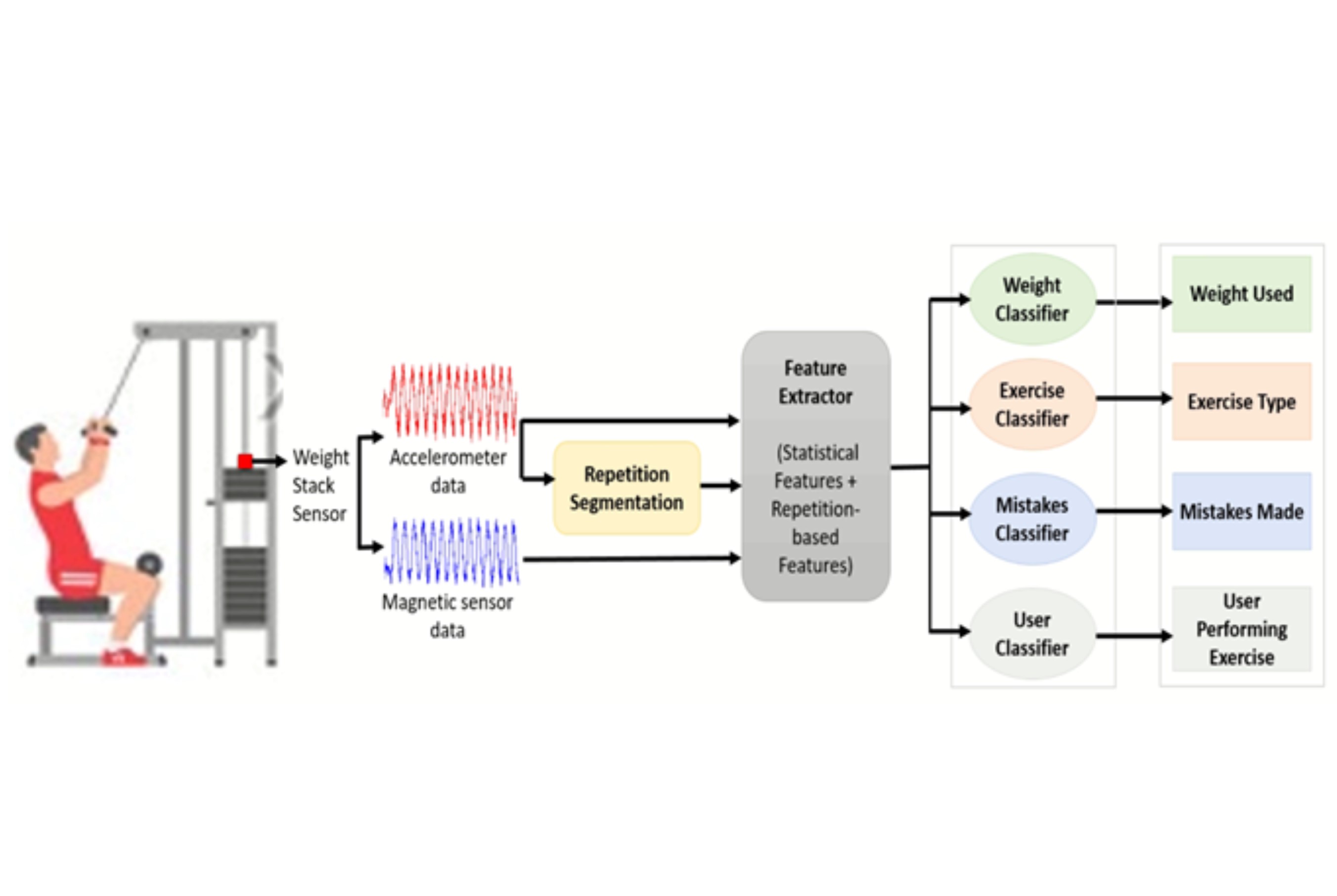Fine-grained, unobtrusive and individualized monitoring of gym exercises is a high-value problem. Quantified insights can help users track and improve their own exercise routines and provide corrective postural feedback to prevent injuries. We use a simple, cost-effective sensor, containing only a 3-axis accelerometer and a 3-axis magnetometer, mounted on the weight stack of gym exercise machines, to obtain fine-grained insights into multiple aspects of gym exercise behavior. This is in contrast to prior approaches that either use wearable sensors (obtrusive and requires active user engagement), or video sensing (privacy concerns & inaccurate in multi-user settings).
Our approach utilizes the sensor to:
• Identify who is performing the exercise
• Track what exercise the individual is performing
• Track how much weight a user is lifting
• Identify whether they are doing the exercise correctly.
Our technology uses the two sensors as follows:
(i) Magnetic Sensor: Affected by the quantity, and relative proximity of the iron weight plates, thus captures weight used and motion of the cable pulley.
(ii) Accelerometer: Tracks the temporal motion (acceleration, speed, displacement) of the weight stack.
We then build a multi-stage classification pipeline that utilizes features extracted from both the sensors to provide meaningful, multi-dimensional, fine-grained insights into the underlying exercise routine.
Real world studies show that W8-Scope can:
• Identify the weight used with an accuracy of 95.6%
• Identify the exercise performed with 94.7% accuracy
• Detect commonplace mistakes with 96.7% accuracy
• Identify the user with 98% accuracy
This technology can be used in a “Virtual Personal Trainer” application that can perform advanced analytics to provide personalized feedback. Such an application can reveal, for example:
• Is the user making mistakes while performing exercises?
• Does the user commit more mistakes during shoulder exercises compared to exercises targeting other muscle groups?
• Is the user training the same set of muscles repeatedly across different sessions?
The application can then suggest more variety of exercises and also specific areas that a user need to improve.
Fitness is transitioning from a subculture of passionate enthusiasts to a mainstream lifestyle across all demographics (e.g., teenagers, active adults, elderly). This increased interest in gym regimens has also led to an increase in related injuries. Moreover, the gym-goers are interested in automatic logging of their exercise patterns in order to track their performance and progress.
Using such a simple, cost-effective and unobtrusive approach that integrates quantified fitness monitoring capabilities:
(a) Gym-goers will be able track their exercise routine (exercises, number of sets/repetitions, weight lifted), progress and performance and obtain personalized coaching from a “virtual trainer”
(b) Gyms and activity centres can offer their users valuable personalized feedback at low cost, thereby increasing customer engagement and satisfaction
(c) Mobile and wearable App developers can integrate gym activity into upcoming wellness and healthy living Apps
